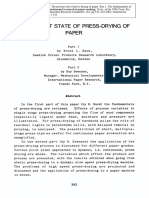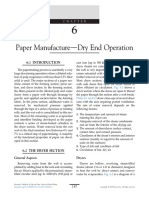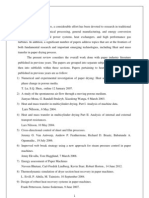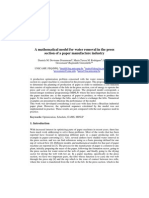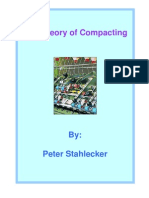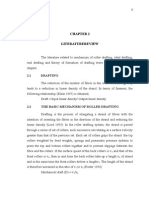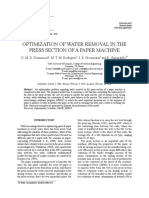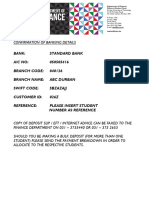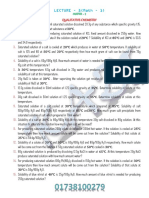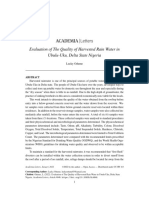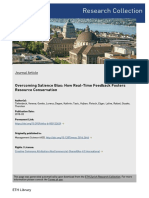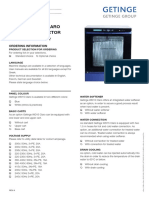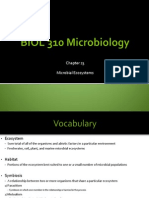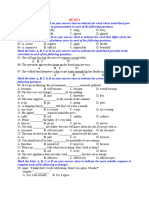0% found this document useful (0 votes)
7 views13 pagesMod 6 Part 1 Lecture II
The document discusses the theory and variables involved in pressing and vacuum systems, focusing on the nip process and the associated pressure curves. It outlines the effects of pressing on fiber structure, rewetting processes, and the application of Darcy's Law in fluid flow through fibrous materials. Additionally, it highlights the importance of process variables and equipment parameters in optimizing the wet pressing operation.
Uploaded by
Salmaan JoomaCopyright
© © All Rights Reserved
We take content rights seriously. If you suspect this is your content, claim it here.
Available Formats
Download as PPTX, PDF, TXT or read online on Scribd
0% found this document useful (0 votes)
7 views13 pagesMod 6 Part 1 Lecture II
The document discusses the theory and variables involved in pressing and vacuum systems, focusing on the nip process and the associated pressure curves. It outlines the effects of pressing on fiber structure, rewetting processes, and the application of Darcy's Law in fluid flow through fibrous materials. Additionally, it highlights the importance of process variables and equipment parameters in optimizing the wet pressing operation.
Uploaded by
Salmaan JoomaCopyright
© © All Rights Reserved
We take content rights seriously. If you suspect this is your content, claim it here.
Available Formats
Download as PPTX, PDF, TXT or read online on Scribd
/ 13



















